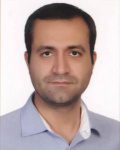| Authors | Fatemeh Ghalgarzadeh-Mahdi Majidi-Rashid Mirzavand |
|---|---|
| Conference Title | 8th Iranian Conference on Signal Processing and Intelligent Systems (ICSPIS 2022) |
| Holding Date of Conference | 2022-12-28 |
| Event Place | University of Science and Technology of Mazandaran |
| Page number | 1-6 |
| Presentation | SPEECH |
| Conference Level | National Conferences |
Abstract
Intelligent reflecting surface (IRS) with wireless channel reconfiguration capability has been proposed as a promising technology to improve the performance of future wireless networks. IRS is able to achieve massive connectivity, as well as high energy and spectral efficiency with the aid of non-orthogonal multiple access (NOMA) technique. However, IRS in practical systems faces serious challenges such as discrete phase shift configuration, the dependence of reflection amplitude on phase shift, as well as dependence on incident and reflection angles. Hence, we consider a downlink NOMA system assisted by an IRS under practical reflection models and maximize the sum rate by optimizing the IRS phase shift configuration. Since the corresponding optimization problem is non-convex, two exhaustive search and genetic algorithm methods are used to solve the problem. Simulation results show that increasing the number of IRS elements improves the sum rate, and on the contrary, significantly increases the problem-solving time in the exhaustive search method and makes it inefficient. In comparison the genetic algorithm is able to effectively solve the problem in less time than the exhaustive search method. Moreover, a simple but efficient phase aligning algorithm is also proposed in single-user case as a suboptimal solution of problem.
Full Paper
File Download Link
